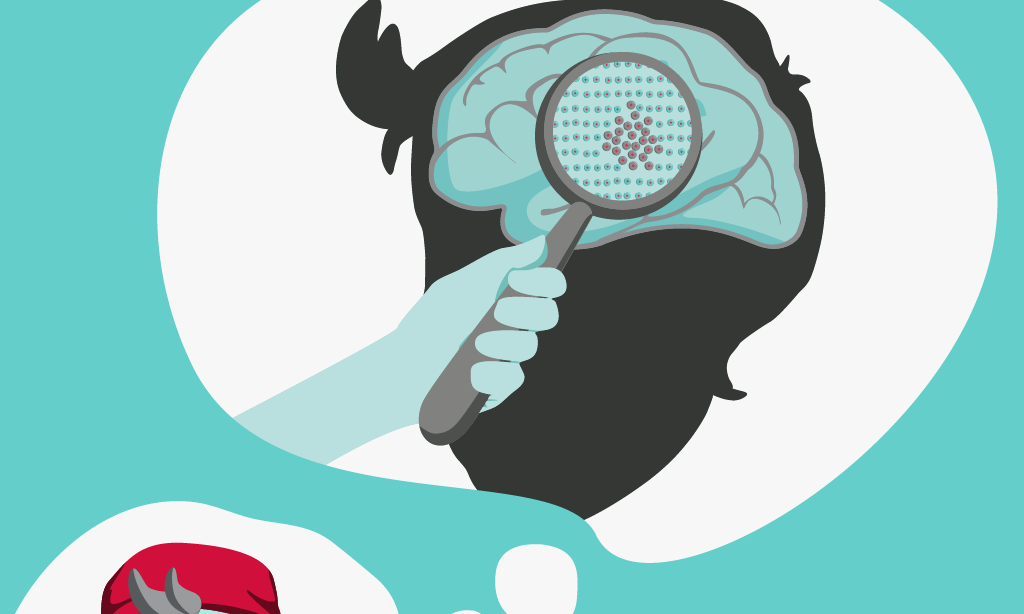Diffuse midline glioma (DIPG)
Previously called DIPGs, diffuse midline gliomas are the second most common type of primary high grade brain tumour in children. They are a type of glioma and grow in the midline between the two halves of the brain. There are various treatment options but radiotherapy is the current standard.
Short summary
DIPG stands for diffuse intrinsic pontine glioma. But, this type of brain tumour is now called diffuse midline glioma.
These tumours grow in the area between the two halves of the brain. This is called the midline, which where the new name comes from.
Symptoms might include headaches, nausea, and fatigue. And, radiotherapy is usually the preferred treatment for DIPGs.
On this page:
- What is DIPG?
- DIPG symptoms
- What causes DIPGs?
- DIPG treatment
- How long can someone live with a DIPG?
Get support
It’s normal to feel shocked if you or someone you know has been diagnosed with DIPG. Our Support Team can answer questions you have or provide a listening ear if you need one.
Get your free Information Pack
Our Brain Tumour Information Pack can help you better understand your diagnosis and feel confident talking to your medical team.
Join our online support groups
Our online support groups are a great place to connect with other people affected by a brain tumour.
What is a DIPG, or diffuse midline glioma?
Diffuse midline gliomas are grade 4 brain tumours that, until recently, were called diffuse intrinsic pontine gliomas (DIPGs). They’re more common in children, but they can occur in adults. They’re:
- fast growing
- likely to spread
- sometimes referred to as malignant or cancerous
- difficult to remove surgically because they are diffuse, which means they don’t have well-defined borders
- a type of glioma, which is a brain tumour that grows from a glial cell.
Diffuse midline gliomas (previously called DIPG brain tumours) grow in the areas of the brain that are found in the midline, this is the natural centre line of the brain between its two halves. They most commonly grow in the pons region of the brain stem, the thalamus and the spinal cord.
DIPG symptoms
DIPG symptoms can vary. This is because the areas where they usually develop are responsible for a range of different body functions.
The most common DIPG symptoms your child may experience include:
- problems with walking, coordination or balance
- weakness in the arms and legs
- difficulty controlling facial expressions or one side of the face appearing different from the other
- speech difficulties
- problems with swallowing and chewing
- double vision or difficulty controlling eye movement.
Growth of the tumour might also block the drainage of the cerebrospinal fluid that surrounds and nourishes the brain. This can cause a build-up of pressure in the head, known as hydrocephalus, and can cause:
- headaches (especially in the morning)
- nausea
- fatigue.

Join our community on Facebook
Our closed Facebook group for parents is a great place to connect with other parents affected by a brain tumour and share your experiences.
What causes DIPG, or diffuse midline glioma?
The cause of brain tumours, including diffuse midline gliomas, is not yet known. This can be one of the most difficult things to accept as a parent as it can leave you feeling helpless.
Brain tumours are nobody’s fault though. There is no research that shows that anything you may have done during pregnancy or in your child’s early infancy could have caused your child’s brain tumour.
At the moment, there’s ongoing research into diffuse midline gliomas, including discovering its causes, which could help develop new treatments in the future.
DIPG treatment
Radiotherapy is the current standard of treatment for children with a diffuse midline glioma (previously known as DIPG). Steroids may also be used to help reduce some of the pressure caused by the tumour and radiation treatment.
Unfortunately, surgery to remove the tumour is usually not possible because of:
- the difficulty of removing a diffuse tumour without damaging surrounding healthy tissue
- the dangers of operating on areas of the brain that control things such as breathing and heart rate.
Chemotherapy drugs that are used to treat high grade gliomas in other parts of the brain and in adults, have unfortunately not been effective in treating childhood diffuse midline gliomas.
How long can somebody live with a DIPG?
This will be different for everybody who is diagnosed with a diffuse midline glioma (formerly known as diffuse intrinsic pontine glioma, or DIPG). It depends on many factors, including the specific details about the tumour, how they react to treatment and their general health.
However, we do have some statistics on life expectancy in our DIPG prognosis page, linked below.
Diffuse midline glioma prognosis
Support and Information Services
Research & Clinical Trials Information
You can also join our active online community.
In this section

Get support
If you need someone to talk to or advice on where to get help, our Support and Information team is available by phone, email or live-chat.
Get your free Brainy Bag
Our Brainy Bag is a free gift for children and young people who have been diagnosed with a brain tumour, made up of a range of handpicked toys and activities!
Recommended reading

Share your experiences and help create change
By taking part in our Improving Brain Tumour Care surveys and sharing your experiences, you can help us improve treatment and care for everyone affected by a brain tumour.
